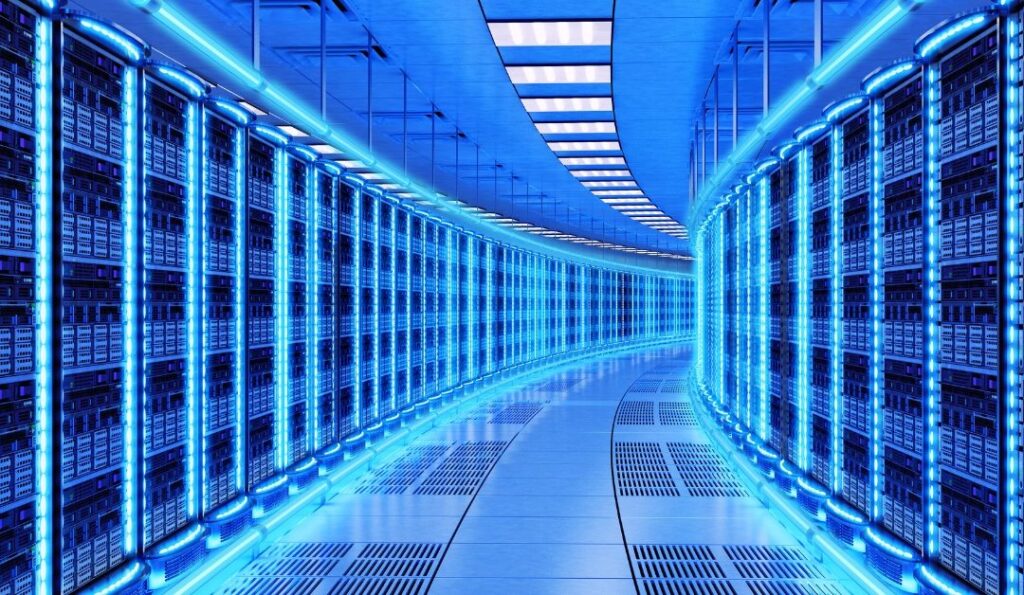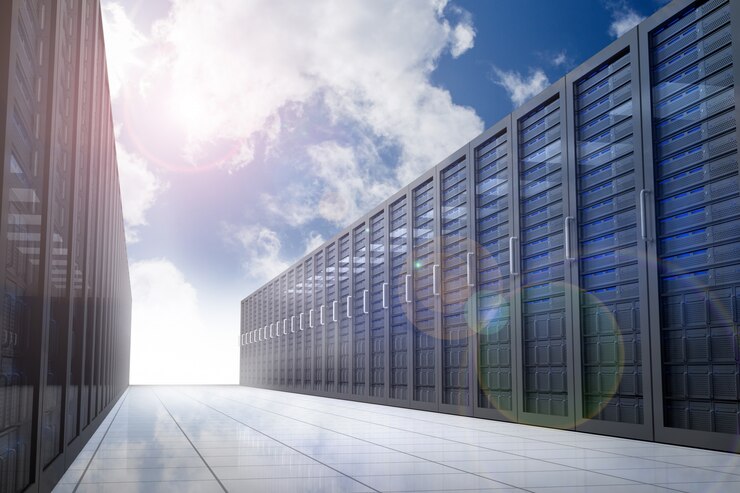If you work in a digital industry or have any kind of information about data-driven businesses (which nowadays equals almost everything), you are well aware that every operational decision comes down to data. And what keeps our data safe? A Data Center.
However, building a data center involves more than just selecting a location—it requires careful consideration of Data Center Construction Costs and other factors. The Data Center Location plays a critical role in determining expenses, availability of resources, and long-term operational efficiency. From land costs to cooling systems and power supply, every element impacts the overall investment. Understanding these factors helps businesses plan strategically to meet their growing data storage and management needs while maintaining cost-effectiveness. In this article, we’ll explore the key components and regional influences that shape data center construction costs and guide you through estimating expenses for such a crucial endeavor.
Here’s a structured table summarizing the key points about Data Center Construction Costs and factors influencing the cost of building a data center:
| Factor | Description | Impact on Costs |
|---|---|---|
| 1. Location | The location of the data center significantly affects the cost. Key considerations include land prices, real estate demand, proximity to energy sources, and connectivity. | Urban areas tend to be more expensive (high real estate & energy), while rural areas may save on land but incur higher utilities. |
| 2. Size & Capacity | The size of the facility (measured in square footage and power capacity) directly influences construction and operational costs. | Larger facilities require more materials, cooling systems, and power redundancies, increasing overall costs. |
| 3. Infrastructure | Essential systems like cooling, power backup (UPS), and fire suppression systems. Technologies such as liquid cooling or advanced HVAC increase initial costs. | Advanced systems raise upfront costs but improve long-term efficiency. |
| 4. Technology | The integration of cutting-edge technologies like AI-driven monitoring and automation boosts costs but offers long-term savings. | High-tech systems like AI-driven monitoring increase construction costs but help with operational efficiency over time. |
| 5. Compliance & Security | Meeting industry standards and certifications (e.g., Tier III/IV, environmental certifications) raises costs. Additionally, ensuring security systems meet regulations adds to expenses. | Regulatory compliance increases upfront costs but ensures long-term operational stability and security. |
| 6. Regional Variations | Costs vary significantly by region, depending on labor costs, energy prices, land availability, and local regulations. | High-income economies (e.g., U.S., Europe) have higher costs compared to emerging economies (e.g., Southeast Asia, India). |
| 7. Construction & Real Estate | The cost of land and the construction of the building itself, including materials and labor, is a major expense. | Urban real estate prices can substantially increase costs, while rural land might offer savings. |
| 8. Power Infrastructure | Setting up reliable power systems (generators, UPS, electrical grids) accounts for 30-40% of the total costs, with energy prices in some regions driving up expenses. | Energy costs significantly increase total construction costs, particularly in regions with high energy prices. |
| 9. Cooling Systems | Efficient cooling systems (liquid cooling, HVAC, etc.) are vital, especially in warmer climates. | The choice of cooling system impacts initial investment but can save costs over time in energy efficiency. |
| 10. IT Hardware & Networking | Includes the cost of servers, storage systems, networking hardware, and the installation process. | IT hardware is one of the largest expenses and must be tailored to the data center’s needs and capacity. |
| 11. Regulatory Compliance | Environmental standards (LEED certification, etc.) and local regulations increase costs but ensure sustainability and safety. | Compliance with certifications like LEED or Tier III/IV can significantly raise initial construction costs. |
Data Center Construction Cost by Location:
| Region | Cost Range (per MW) | Key Influencing Factors |
|---|---|---|
| United States | $7 million – $12 million | High real estate and energy costs, abundant fiber connectivity in certain regions (e.g., Northern Virginia). |
| Europe | $8 million – $14 million | Strict environmental regulations and high energy efficiency standards in places like Germany and the Netherlands. |
| Japan | Over $10 million | Earthquake-resistant infrastructure, high land costs, and limited space. |
| India | $4 million – $7 million | Booming tech industry, urban real estate prices, and improving connectivity in cities like Mumbai. |
| Brazil | $5 million – $8 million | High energy prices and import taxes on equipment, though growing demand for data centers. |
| Southeast Asia | $3 million – $6 million | Low labor costs and government incentives, with the trade-off of longer deployment times. |
| Africa (South Africa) | $2 million – $5 million | Lower construction costs, but challenges in energy reliability, often mitigated by renewable sources. |
Cost Breakdown by Data Center Size:
| Data Center Type | Cost Range | Key Characteristics |
|---|---|---|
| Small Data Centers | $500,000 – $5 million | Typically localized, serving small businesses, minimal infrastructure and energy needs. |
| Medium Data Centers | $10 million – $25 million | Serving mid-sized enterprises, these require more advanced infrastructure and cooling systems. |
| Hyperscale Data Centers | $500 million – $1 billion+ | Large-scale, serving global tech companies, with advanced cooling systems, AI integration, and large IT infrastructure. |
Cost-Saving Strategies:
| Strategy | Description | Impact on Costs |
|---|---|---|
| Optimize Location | Choose locations with lower energy costs, tax incentives, and more affordable real estate. | Reduces operational costs in the long term, although initial investment might be affected by real estate costs. |
| Modular Designs | Use prefabricated modules to reduce construction complexity and time. | Lower upfront construction costs and faster deployment times. |
| Energy Efficiency | Implement advanced cooling systems, use renewable energy sources, and optimize IT equipment for energy efficiency. | Long-term operational savings due to lower energy consumption. |
| Leverage Existing Infrastructure | Retrofit older buildings instead of constructing new ones. | Significant savings on construction costs. |
| Streamline Procurement | Partner with vendors offering bulk discounts for construction materials and IT equipment. | Reduces equipment and material costs through bulk purchasing. |
What Determines the Cost of Building a Data Center?
The cost of building a data center depends on several key factors, each contributing to the overall expenses. From land acquisition to infrastructure and technology, every detail impacts the final budget. Here’s what determines data center construction costs:
- Location: The Data Center Location significantly influences costs. Urban areas with high real estate prices naturally demand more, while rural locations might save on land but incur higher utility or connectivity expenses. Proximity to renewable energy sources or cooling options can also affect costs.
- Size and Capacity: The scale of the facility, measured in square footage and power capacity, determines core construction costs. Larger facilities require more materials, cooling systems, and power redundancies.
- Infrastructure: Advanced systems like precision cooling, robust power backup (UPS), and fire suppression systems add to the price. For example, using liquid cooling is more efficient but increases initial investment.
- Technology: Integrating cutting-edge tools like AI-driven monitoring systems or automated equipment raises costs but provides long-term savings.
- Compliance and Security: Ensuring the data center meets industry standards for security, environmental regulations, and certifications like Tier III or IV further escalates costs.
For instance, building a hyperscale data center in an area with abundant renewable energy might cost around $10 million per megawatt, but these investments ensure efficiency and scalability.
Regional Variations: Data Center Construction Costs by Location
Data center construction cost varies widely based on location, influenced by factors like land prices, labor costs, energy availability, and local regulations. Here’s a breakdown of how costs differ by Data Center Location Conditions:
High-Income Economies
- United States: The U.S. leads in hyperscale data centers, with construction costs averaging $7-$12 million per megawatt (MW). Locations like Silicon Valley or Northern Virginia demand higher investments due to real estate and energy costs. For example, Northern Virginia benefits from abundant fiber connectivity, making it a premium choice despite its expense.
- Europe: Countries like Germany and the Netherlands are hubs for data centers, costing $8-$14 million per MW due to strict environmental regulations and high energy efficiency standards.
- Japan: Construction costs here can exceed $10 million per MW due to earthquake-resistant infrastructure and limited land availability.
Emerging Economies
- India: With a booming tech industry, data centers in India cost about $4-$7 million per MW. Cities like Mumbai are hotspots due to connectivity, but costs increase with urban real estate prices.
- Brazil: Latin America’s rising demand places Brazil at the forefront, with costs ranging from $5-$8 million per MW, driven by high energy prices and import taxes on equipment.
Developing Economies
- Southeast Asia: Countries like Vietnam and the Philippines offer affordable data center construction at $3-$6 million per MW. These locations attract investment due to low labor costs and government incentives.
- Africa: Regions like South Africa see costs of $2-$5 million per MW, with challenges in energy reliability often offset by renewable energy sources.
Keep in mind that while high-income regions offer advanced infrastructure, emerging markets provide cost-effective solutions. Businesses must balance location-specific costs with long-term operational benefits. For instance, lower costs in Southeast Asia might come with slower deployment times, while U.S. locations ensure faster scalability.
Breaking Down Data Center Costs: Key Components
Data Center Construction Cost and overall budget relies heavily on these factors:
- Construction and Real Estate: The cost of land and building materials is a major factor, influenced by location and local market conditions. For example, urban areas with high real estate prices demand higher investment.
- Power Infrastructure: Setting up reliable power systems, including generators, UPS systems, and electrical grids, can account for 30-40% of the costs. High energy prices in some regions further escalate this expense.
- Cooling Systems: Efficient cooling technologies like liquid cooling or advanced HVAC systems are vital, particularly in regions with warmer climates.
- IT Hardware and Networking: Servers, storage systems, and networking data center, combined with installation costs, are another significant expense.
- Regulatory Compliance: Meeting local environmental standards and certifications, such as LEED, can drive up costs but ensure sustainability.
Cost Range for Small, Medium, and Hyperscale Data Centers
The cost of building data centers varies significantly based on size and scale:
- Small Data Centers: Designed for localized needs, these typically cost between $500,000 to $5 million. They serve small businesses and require limited infrastructure.
- Medium Data Centers: Serving mid-sized enterprises, these cost $10 million to $25 million, depending on power, cooling, and IT capacity.
- Hyperscale Data Centers: Built for global tech giants, these massive facilities cost upwards of $500 million to over $1 billion. They feature advanced cooling, AI integration, and scalable capacity to support millions of users.
Costs are further influenced by Data Center Location Conditions, energy requirements, and technology choices.
Cost-Saving Strategies for Building a Data Center
Datacenter cost is something your business has to pay, and there’s no way around it. But here are some ways to save extra while building the center that fits your needs:
- Optimize Location: Choose regions with lower energy costs and tax incentives to reduce operational expenses.
- Use Modular Designs: Prefabricated modules save time and reduce construction complexity.
- Focus on Energy Efficiency: Implement advanced cooling systems, renewable energy sources, and energy-efficient equipment to lower long-term costs.
- Leverage Existing Infrastructure: Retrofit older buildings when possible instead of building from scratch.
- Streamline Procurement: Partner with vendors offering competitive pricing and bulk discounts for IT and construction materials.
Final Thoughts
Building a data center is a significant investment, but with the right strategies and understanding of cost components, it becomes a manageable and rewarding endeavor. From selecting the right location to optimizing design and efficiency, thoughtful planning can lead to long-term success. By embracing innovation and sustainability, businesses can create facilities that support growth while minimizing expenses. A well-planned data center isn’t just a cost—it’s a cornerstone for future possibilities. Visit us in Danacloud.


